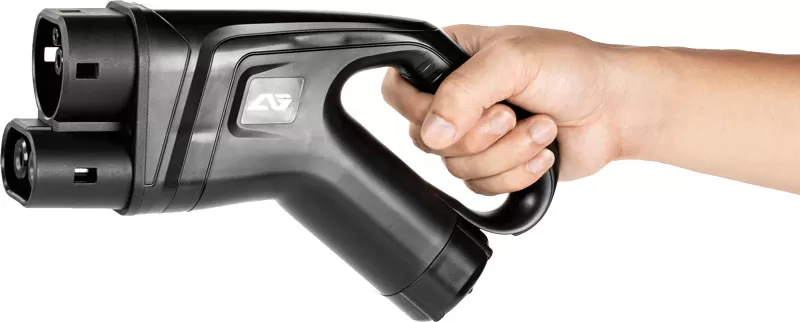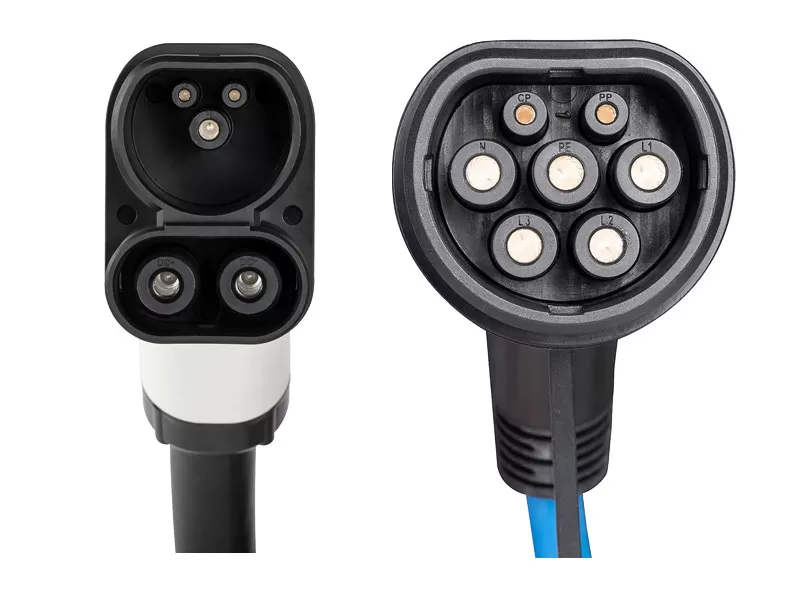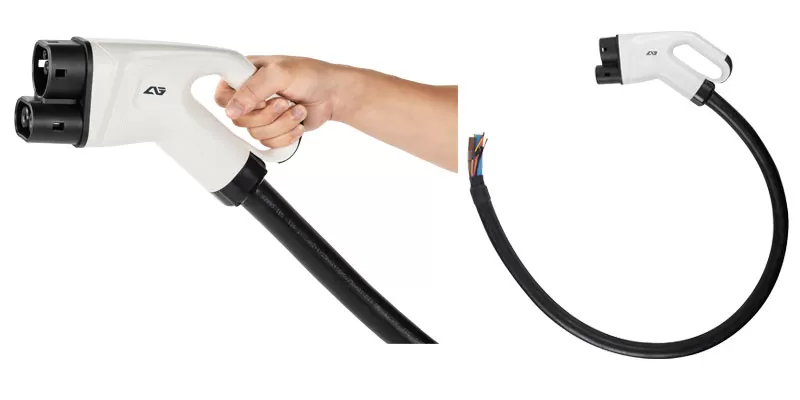
CCS (Combined Charging System) is a DC fast charging standard for electric vehicles, combining AC and DC charging into a single connector to support rapid charging up to 350 kW. Welcome to AG , a collection of tips, guides, and advice to help you navigate the changing world of electric vehicles and mobility tech.
CCS is another type of connector used for rapid-charging and is growing in popularity — particularly in Europe and North America.
As mentioned, CCS is another connector that’s used for rapid-charging electric vehicles. It’s an open international standard, meaning car manufacturers all over the world use it — unlike CHAdeMO, which tends to be favored by Japanese manufacturers.
It gets the “combined” part of its name as the connector builds on a low-power, slow-charging Type 2 connector. The CCS connector uses some connections of the Type 2 interface and adds two additional DC power lines which are capable of running at higher voltages compared to the standard connector.

CCS charger (pictured left), compared to Type 2 (right). Two large direct current (DC) pins are added below on the CCS, and the four alternating current (AC) pins for neutral and three-phase are removed. The three remaining connections on the CCS connector are there so the car and charging unit can communicated and ensure safe charging.
Like CHAdeMO, CCS is a direct current (DC) charging connector. But because it doesn’t require a whole other connector like CHAdeMO, it takes up a bit less space on the car.

CCS1 is mainly used in North America and is based on the Type 1 connector, while CCS2 is used in Europe and is based on the Type 2 connector. Both support DC fast charging, but they are not physically compatible.
A CCS plug is a DC fast charging connector used in the Combined Charging System. It combines a standard AC connector with two additional DC pins, allowing electric vehicles to use both AC and DC charging through a single charging port.
While Tesla has its own rapid-charging network of “Superchargers,” in 2018, the company confirmed that its European Model 3 would be equipped with a Type 2 CCS connector. This means that Tesla owners can access both the supercharger network but also use third-party chargers that use Type 2 or CCS standards.
Like all other EV chargers, using a CCS connector is easy. Simply pull up to a supported charging location, follow the instructions on the charging unit, select the connector, and plug it into your car. You can use tools like Open Charge Map to locate the connector you need and filter by Type 2 or CCS.
Generally speaking, the combined charging system connector can supply between 25 kW to 350 kW of charging CCS power. For most EVs, this is enough to charge from zero to 80% in under an hour. Though be aware, how fast you can charge on CCS depends on the capability of your electric car.
Charging an EV is certainly different to filling up a combustion engine vehicle with gasoline, but it needn’t be anymore difficult. If you’re in the market for a new EV, before buying it might be useful to see what types of connectors are most freely available in the areas that you drive in often.
Ultimately, charging infrastructure is always improving, and no one standard is necessarily better than another. It boils down to what is most appropriate for your own situation.
Thank you for reading, all the pictures shown in this article are from AG.